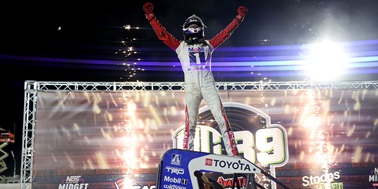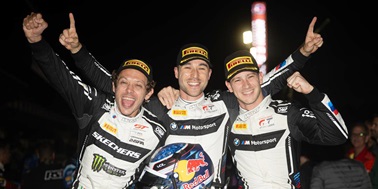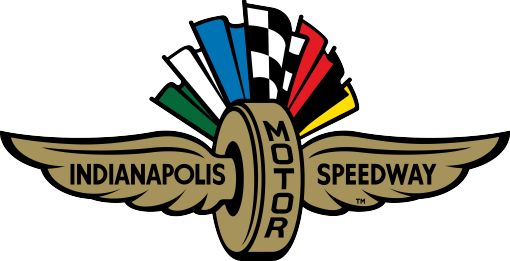Year-by-Year Indy 500 Race Recaps: 1920s

A year-by-year look at each Indianapolis 500-Mile race in the 1920s decade, as told by IMS Historian Donald Davidson.
1920
Although 1915 winner Ralph de Palma is perhaps best remembered for his shattering defeat of 1912 (he led all but the first two laps and the last two), he came extremely close to winning in 1920 as well.
He was only 14 laps from the finish when his French Ballot rolled to a temporary halt at the north end of the track, allowing Louis and Arthur Chevrolet’s younger brother, Gaston, to take over and win. Stopping twice for fuel only, the 27-year-old Chevrolet completed the entire 500 miles without a single tire change.
His winning Monroe Special was one of seven racing cars built by his brothers in downtown Indianapolis, five of the cars being eliminated by steering arm failures.
Lap prize money was offered for the first time, the chief benefactor being one of Gaston’s sidelined teammates. At the rate of $100 per lap, Joe Boyer’s accumulation of $9,200 from the fund was almost as much as René Thomas received for finishing second.
1921
Building his lead to almost four minutes at the finish, Tommy Milton, holder of the World Land Speed Record of 156 mph over the sands of Daytona Beach for the Duesenberg brothers, now conquered the bricks and mortar of Indianapolis to win for the Chevrolet brothers.
Milton’s mount was one of six Frontenac Specials in the race, constructed approximately four miles from the track by the Chevrolets, who now had no connection whatsoever with the firm to which they had given their name.
The first half was quite literally dominated by Ralph de Palma, who, with typical de Palma fortune, led all but one of the first 110 laps until retiring with a broken connecting rod. This extended his extraordinary record of total laps led to 612, a record not to be broken until Al Unser finally did so 66 years later in 1987.
1922
Shortly after causing a major upset by winning the French Grand Prix for Duesenberg in July 1921, Jimmy Murphy purchased his winning mount from Fred and Augie Duesenberg.
He and his riding mechanic, Ernie Olson, made a winning decision for the 1922 “500” during the winter by replacing the engine with a straight-eight Miller. They proceeded to win the “500” from the pole—first time this had ever been accomplished—and knocked 16 minutes from Ralph de Palma’s record time from 1915, raising the average speed from 89.84 mph to 94.484 mph.
1923
Riding mechanics, mandatory since 1912, were now optional, which, coupled with the fact that the maximum cubic-inch displacement of the engines had been further reduced to 122, led to the appearance of neat, compact little single-seat race cars.
There were 23 lead changes as Tommy Milton, the 1921 winner, scored again and thus became the first driver ever to win the “500” for a second time.
He was relieved at the wheel between laps 103 and 151 by 1919 winner Howdy Wilcox, his own teammate, who had been forced out after leading the race with another car.
A strong international contingent was on hand, with five privately entered French Bugattis and a trio of German Mercedes, the latter being equipped with the Speedway’s first-ever superchargers.
1924
Wealthy Detroit sportsman Joe Boyer had the distinction of leading both the first and last laps, but in different cars.
Number-one driver for the local Duesenberg team, Boyer jumped to an early lead but quickly ran into delays. While Mercedes had pioneered the use of superchargers the year before, Duesenberg now had three of its four entries outfitted with centrifugal “blowers.”
Boyer eventually handed his car over to another driver, and at 109 laps Fred Duesenberg had him take over the fourth-place-running team car of Lora Corum. When veteran Earl Cooper had to stop twice with trouble late in the race, Boyer sailed into the lead.
Since one driver had started in the car and another had finished, Corum and Boyer were declared co-winners.
1925
Peter DePaolo, with 21 laps of relief at the midpoint from Norman Batten, became the first to win the “500” in under five hours and thereby record the first average speed in excess of 100 mph.
DePaolo, the nephew of Ralph de Palma, who had won in 1915, averaged 101.13 mph. Not only that, but the second- and third-place finishers also squeezed in at under five hours, the team of Dave Lewis and Bennett Hill edging out that of Phil Shafer and Wade Morton.
DePaolo and Shafer both drove 122-cubic-inch supercharged racing cars built under the direction of Fred and Augie Duesenberg right across the street from their passenger car
factory, barely four miles from the track. Lewis and Hill shared the first front-drive car ever to compete in a “500.”
1926
Frank Lockhart, who two years later would lose his life in an attempt to break the World Land Speed Record on the sands of Daytona Beach, showed up at Indianapolis as a 23-year-old unknown.
He secured an assignment as a potential relief driver for Bennett Hill, but just a few days before the race, driver/owner Peter Kreis had to be hospitalized with pneumonia. Lockhart took over the Kreis car and immediately began to travel quickly, setting a one-lap track record of 115.448 mph on an incomplete qualifying attempt.
He eventually started back in 20th position but was two laps ahead of the second-place car when the rain-interrupted race was halted for the second and final time at 400 miles.
This was the first of four years for engines limited to only 91 ½ cubic inches.
1927
For the second year in a row, a driver with no previous starts won the “500.” After 1926 winner Frank Lockhart dropped out, having led almost the entire first 300 miles, Purdue University undergraduate George Souders eventually took over with a privately entered Duesenberg and cruised to the win by a hefty 12 minutes over second place.
Relief driving was in abundance, with several cars having three different drivers, Souders being the only person among the first 17 not to give up the wheel at some point.
There was major excitement on the main straight on lap 24 when fuel dripping from a split tank on the Miller of Norman Batten ignited, turning the car into a virtual blowtorch. Rather than risk pulling into the fuel-laden pits, Batten stood up in the cockpit and bravely steered the blazing inferno all the way past the pits before leaping to safety.
In the meantime, negotiations were already underway for the track to change hands, and on Aug. 15, the Carl Fisher/James Allison group turned it over to World War I flying “ace” and former “500” driver Eddie Rickenbacker.
1928
Twenty-three-year-old Louis Meyer led only 19 of the 200 laps, but they included the all-important final one as he cruised to his first of three wins.
Never before in the lineup, although he had participated in the previous year’s race as a relief driver, Meyer was lucky to have even been in this one. A Duesenberg he was supposed to have raced was reassigned to another driver, then at the last minute, owner/driver Phil Shafer had to sell one of his Millers due to an anticipated sponsorship failing to materialize. Alden Sampson, a sportsman friend of Meyer’s wasted no time in acquiring the car.
On the pole was Leon Duray (whose real name was George Stewart), driving a front-drive Miller which was among the first to be fueled with an alcohol blend. Because no one would be able to beat his speed the following year—and a change in specifications for 1930 would slow the cars even further—Duray’s single-lap record of 124.018 mph would remain unbroken for nine years.
1929
Ray Keech, who one year earlier had established a new out-and-out World Land Speed Record in excess of 207 mph up and down the sands of Daytona Beach, now added an Indianapolis 500 victory to his list of accomplishments.
Ironically, his winning 91 ½-cubic-inch supercharged Miller had come from the estate of Keech’s close friend and legendary LSR rival, Frank Lockhart, who had lost his life at Daytona trying to land that very same record for himself. A little-known fact is that the Miller’s new owner was a lady, M.A. Yagle, actually being Maude Yagle, the wife of a Philadelphia businessman.
Another Miller, shared by Lou Moore and Barney Kloepfer, was forced out of second position by a mechanical failure only two laps from the end, permitting defending winner Louis Meyer to salvage the runner-up spot. Seemingly on his way to a repeat win, Louis had stalled on his final stop, losing seven minutes before the engine could be restarted. Keech beat him to the checkered flag by six minutes.
Latest News
View All News
No. 9: Cannon McIntosh Doubles Up in Dramatic BC39 Win
The Penske Entertainment editorial staff is looking back at the 10 biggest moments of 2025 at Indianapolis Motor Speedway in this year-end series, with one installment appearing on the site per day in countdown fashion from Dec. 22-31.

No. 10: MotoGP Great Valentino Rossi Adds Four-Wheeled Win at IMS
The Penske Entertainment editorial staff is looking back at the 10 biggest moments of 2025 at Indianapolis Motor Speedway in this year-end series, with one installment appearing on the site per day in countdown fashion from Dec. 22-31.

Three-Day Schedule Announced for 2026 Brickyard Weekend
Fans once again can enjoy three days of on-track action when the stars of the NASCAR Cup Series and O’Reilly Auto Parts Series return to Indianapolis Motor Speedway for Brickyard Weekend on July 24-26, 2026.
